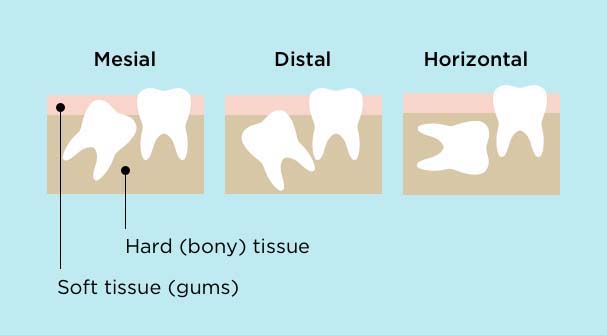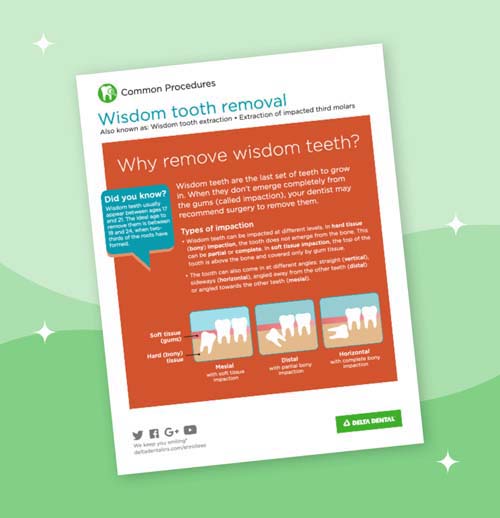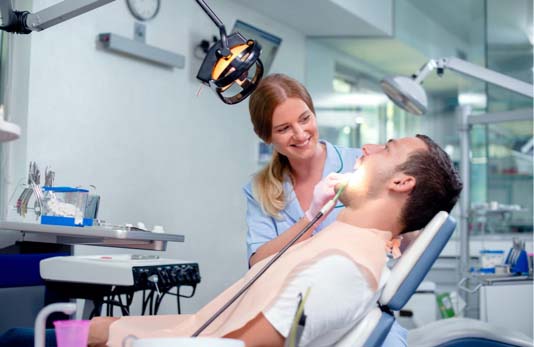Your guide to wisdom teeth removal

Wisdom teeth are the last set of teeth to grow in. When they don't emerge completely from the gums (known as impaction), your dentist may recommend surgery to remove them.
What are wisdom teeth?
Wisdom teeth, also known as third molars, are just as useful as any other teeth if they grow in normally and have healthy gum tissue around them. However, for many people, wisdom teeth don't have the space to grow in properly.
Wisdom teeth usually appear between ages 17 and 21. The ideal age to remove them is between 18 and 24, when two-thirds of the roots have formed. However, they can still be removed later in adulthood.
What does it mean for a tooth to be impacted?
Impaction is when a tooth doesn't emerge completely from the gums. Wisdom teeth can be impacted at different levels:
- In hard tissue (bony) impaction, the tooth does not emerge from the bone. This can be partial or complete.
- In soft tissue impaction, the top of the tooth is above the bone and covered only by gum tissue.
The tooth can also come in at different angles: straight (vertical), sideways (horizontal), angled away from the other teeth (distal) or angled towards the other teeth (mesial).

What if I keep my wisdom teeth?
Keeping impacted wisdom teeth may put you at risk of:
- Infected gums
- Decay in nearby teeth
- Cysts
- Bone damage
- Crowded or misaligned teeth
If your wisdom teeth grow in correctly, with enough space in the mouth, they may not need to be removed.
If there is a problem, however, non-impacted teeth can be pulled without surgery.
What happens during wisdom teeth extraction?
- Your dentist will take x-rays of your mouth to get a look at your wisdom teeth. Depending on the position of your teeth, you may need referral to an oral surgeon. Most people choose to have all four teeth removed during the same procedure.
- You will receive anesthesia. Depending on how complex the procedure is, you may receive:
- Local anesthetic by a shot to numb the area where the tooth — or teeth — will be removed (you will stay awake)
- Sedation anesthesia to put you in a “light sleep,” given intravenously or through a gas mask
- General anesthesia through an IV or gas mask, for a “deep sleep”
- The dentist or surgeon will open the gum tissue to remove the tooth. Some bone tissue may also be removed if it is covering the tooth.
- The tooth will be removed. It may first be cut into smaller pieces to make it easier to take out.
- The dentist or surgeon will sew up the wound.
How to recover from oral surgery
Follow these tips to ensure a successful recovery:
- Keep a gauze pad on the wound and change it frequently.
- Use an ice pack to reduce swelling.
- Avoid alcohol, smoking and physical activity.
- Rinse gently with warm salt water.
- Avoid using a straw. The pressure can damage the wound.
- Brush and floss normally to keep your mouth free of food debris and harmful bacteria. Be careful to not brush the wound.

Last updated January 28, 2022
Related articles:
The oral health information on this website is intended for educational purposes only. Always consult a licensed dentist or other qualified health care professional for any questions concerning your oral health.


